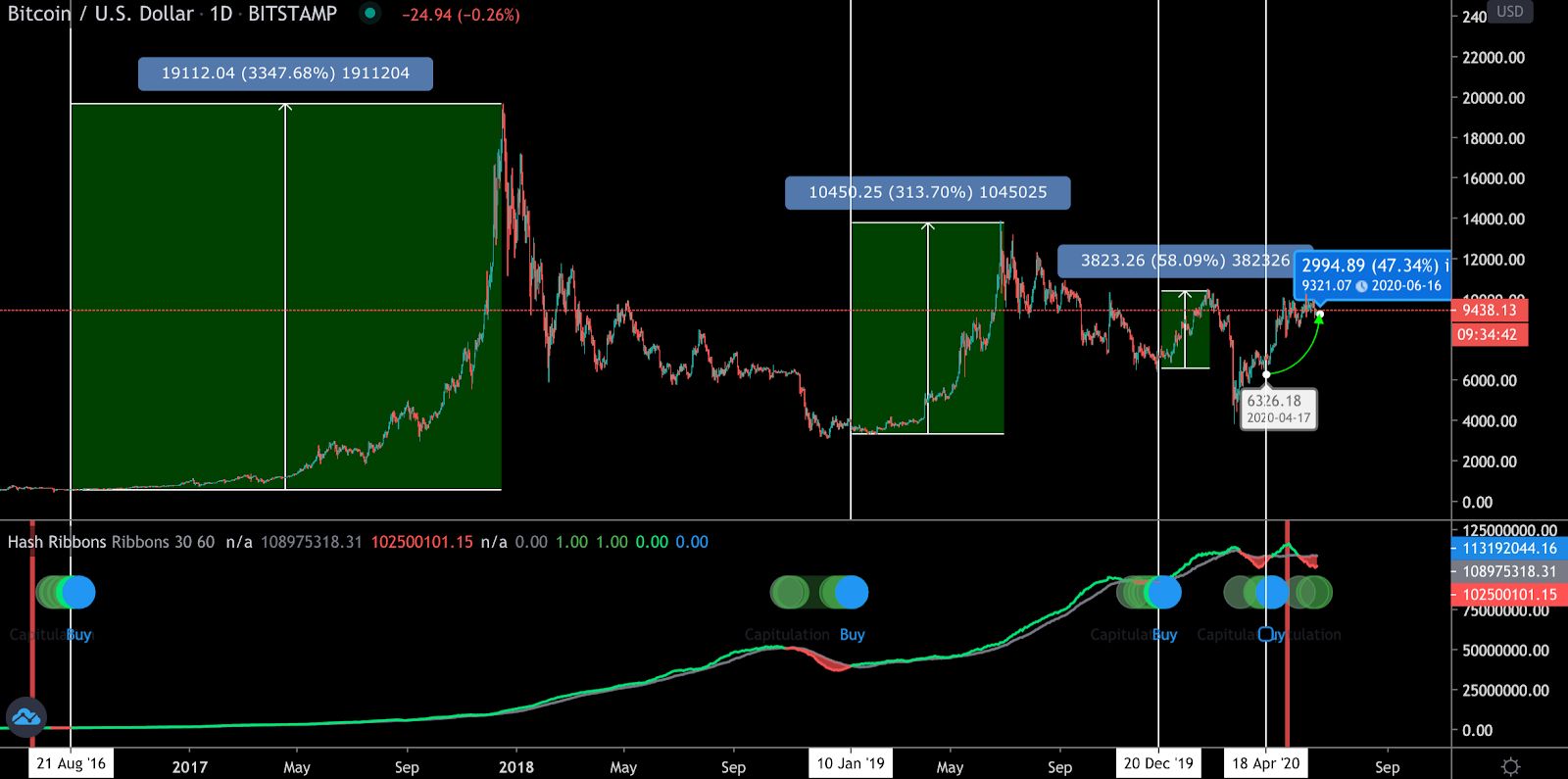Cryptocurrency trading has gained significant popularity in recent years, with traders seeking to take advantage of the price volatility in the market. To make informed trading decisions, traders often rely on indicators that provide valuable insights into market trends and price movements. In this comprehensive guide, we will explore the best indicators for crypto trading in 2023, their advantages and disadvantages, and how to effectively use them to maximize your profits and minimize risks.
1. Moving Averages: Smoothing Out Price Action
Moving Averages (MA) are widely used indicators in crypto trading that help smooth out price action and identify trends. They calculate the average price of an asset over a specific period, providing traders with a clearer picture of the overall trend. There are different types of moving averages, including Simple Moving Averages (SMA), Exponential Moving averages (EMA), and Weighted Moving Averages (WMA), each with its own characteristics and uses.
Advantages of Moving Averages:
- Smoothes out price fluctuations and reduces noise in the data.
- Helps identify trend direction and potential entry and exit points.
- Can be used to generate trading signals when different moving averages cross over.
Disadvantages of Moving Averages:
- Lag behind current price action, making them less effective in volatile markets.
- May generate false signals during periods of consolidation or when the market is trading in a narrow range.
- Different moving averages may provide conflicting signals, requiring additional analysis.
To effectively use moving averages, traders often look for crossovers between different moving averages. For example, when a shorter-term moving average (e.g., 50-day SMA) crosses above a longer-term moving average (e.g., 200-day SMA), it may signal a bullish trend and a potential buying opportunity. Conversely, when the shorter-term moving average crosses below the longer-term moving average, it may indicate a bearish trend and a potential selling opportunity.
2. Relative Strength Index (RSI): Measuring Price Strength
The Relative Strength Index (RSI) is a widely used momentum indicator that measures the speed and direction of price movements. It compares the magnitude of an asset’s recent gains to its recent losses, providing traders with an indication of whether the asset is overbought or oversold.
Advantages of RSI:
- Helps identify potential overbought and oversold conditions in the market.
- Provides trading signals based on the divergence between RSI and price action.
- Can be used to confirm trend strength and potential trend reversals.
Disadvantages of RSI:
- May generate false signals during periods of strong trends or when the market is in a range.
- Should be used in conjunction with other indicators and analysis tools for more accurate predictions.
The RSI is measured on a scale from 0 to 100, with readings above 70 indicating overbought conditions and readings below 30 indicating oversold conditions. Traders often look for divergences between the RSI and price action to identify potential trend reversals. For example, if the price of an asset is making higher highs, but the RSI is making lower highs, it may suggest a weakening bullish trend and a potential trend reversal.
3. Bollinger Bands: Determining Price Trend and Volatility
Bollinger Bands are widely used indicators that help traders determine the price trend and volatility of an asset. They consist of three lines: a middle band, an upper band, and a lower band. The middle band is typically a simple moving average, while the upper and lower bands are calculated based on the standard deviation of the price.
Advantages of Bollinger Bands:
- Provide a visual representation of price volatility and potential support/resistance levels.
- Can be used to identify overbought and oversold conditions in the market.
- Help traders determine potential price targets and stop-loss levels.
Disadvantages of Bollinger Bands:
- May generate false signals during periods of low volatility or when the market is range-bound.
- Should be used in conjunction with other indicators and analysis tools for more accurate predictions.
- The interpretation of Bollinger Bands can be subjective, leading to different trading strategies.
When the price of an asset touches the upper band, it may indicate overbought conditions, suggesting a potential reversal or price correction. Conversely, when the price touches the lower band, it may suggest oversold conditions, indicating a potential bounce or price increase. Traders often look for price breakouts outside the bands for potential trend continuation or reversal signals.
4. On-Balance-Volume (OBV): Identifying Buying and Selling Pressure
On-Balance Volume (OBV) is a volume-based indicator that reflects the relationship between price and volume. It measures the cumulative buying and selling pressure in the market and can help traders identify potential trend changes and confirm the strength of a trend.
Advantages of OBV:
- Helps identify buying and selling pressure in the market.
- Can be used to confirm trend strength and potential trend reversals.
- Provides insights into the underlying health and activity of a cryptocurrency or token.
Disadvantages of OBV:
- May generate false signals during periods of low volume or when the market is range-bound.
- Should be used in conjunction with other indicators and analysis tools for more accurate predictions.
- The interpretation of OBV can be subjective, leading to different trading strategies.
Traders often look for divergences between OBV and price action to identify potential trend reversals. For example, if the price of an asset is making higher highs, but the OBV is making lower highs, it may suggest a weakening bullish trend and a potential trend reversal. Conversely, if the price is making lower lows, but the OBV is making higher lows, it may suggest a weakening bearish trend and a potential trend reversal.
5. Ichimoku Cloud: Comprehensive Technical Analysis Tool
The Ichimoku Cloud, also known as the Ichimoku Kinko Hyo, is a comprehensive technical analysis tool that provides traders with insights into trend direction, strength, and potential support and resistance levels. It consists of several components, including the Kumo (cloud), senkou span (leading span), and kijun sen (baseline).
Advantages of Ichimoku Cloud:
- Offers a holistic view of the market, including trend direction, strength, and potential support/resistance levels.
- Helps traders identify potential trend reversals and confirm trading signals.
- Can be used in conjunction with other indicators and analysis tools for more accurate predictions.
Disadvantages of Ichimoku Cloud:
- The interpretation of the Ichimoku Cloud can be complex and subjective, requiring experience and practice.
- May generate false signals during periods of low volatility or when the market is range-bound.
- Traders should combine the Ichimoku Cloud with other indicators and analysis tools for more robust predictions.
The kumo, or cloud, is the most distinctive feature of the Ichimoku Cloud and represents potential support and resistance levels. When the price is above the cloud, it indicates a bullish trend, and when the price is below the cloud, it indicates a bearish trend. Traders also look for crossovers between the Senkou span A and Senkou span B to generate trading signals. Additionally, the kijun sen can be used as a dynamic support or resistance level.
6. Moving Average Convergence Divergence (MACD): Trend-Following Momentum Indicator
The Moving Average Convergence Divergence (MACD) is a popular trend-following momentum indicator that measures the difference between two moving averages. It consists of the MACD line, the signal line, and the MACD histogram, providing traders with insights into trend direction and potential buying and selling opportunities.
Advantages of MACD:
- Helps identify potential trend reversals and confirm trend strength.
- Provides trading signals based on crossovers between the MACD line and the signal line.
- Can be used in conjunction with the MACD histogram to visualize the relationship between the MACD line and the signal line.
Disadvantages of MACD:
- May generate false signals during periods of low volatility or when the market is range-bound.
- Should be used in conjunction with other indicators and analysis tools for more accurate predictions.
- The interpretation of MACD can be subjective, leading to different trading strategies.
Traders often look for crossovers between the MACD line and the signal line to generate trading signals. A bullish signal occurs when the MACD line crosses above the signal line, indicating a potential buying opportunity. Conversely, a bearish signal occurs when the signal line crosses above the MACD line, indicating a potential selling opportunity. The MACD histogram can be used to visualize the difference between the MACD line and the signal line, providing additional insights into trend strength.
7. Fibonacci Retracement: Predicting Support and Resistance Levels
Fibonacci Retracement is a popular technical analysis tool used to identify potential support and resistance levels based on the Fibonacci sequence. It helps traders predict where the price of an asset may retrace before continuing its trend.
Advantages of Fibonacci Retracement:
- Provides potential support and resistance levels based on historical price movements.
- Helps traders identify potential entry and exit points in a trend.
- Can be used in conjunction with other indicators and analysis tools for more accurate predictions.
Disadvantages of Fibonacci Retracement:
- The interpretation of Fibonacci Retracement levels can be subjective, leading to different trading strategies.
- May generate false signals during periods of low volatility or when the market is range-bound.
- Traders should combine Fibonacci Retracement with other indicators and analysis tools for more robust predictions.
Traders use Fibonacci Retracement by identifying a significant swing high and swing low on the price chart. They then apply the Fibonacci retracement levels, such as 23.6%, 38.2%, 50%, 61.8%, and 100%, to determine potential support and resistance levels. These levels can be used to identify areas where the price is likely to retrace before continuing its trend. Traders may also combine Fibonacci retracement levels with other technical analysis tools, such as trend lines or moving averages, to confirm trading signals.
8. Stochastic Oscillator: Identifying Overbought and Oversold Conditions
The Stochastic Oscillator is a popular momentum indicator used to identify overbought and oversold conditions in the market. It compares the closing price of an asset to its price range over a specific period, providing traders with insights into potential trend reversals.
Advantages of Stochastic Oscillator:
- Helps identify overbought and oversold conditions in the market.
- Provides trading signals based on crossovers between the %K and %D lines.
- Can be used in conjunction with other indicators and analysis tools for more accurate predictions.
Disadvantages of Stochastic Oscillator:
- May generate false signals during periods of low volatility or when the market is range-bound.
- Should be used in conjunction with other indicators and analysis tools for more accurate predictions.
- The interpretation of Stochastic oscillators can be subjective, leading to different trading strategies.
The Stochastic Oscillator is measured on a scale from 0 to 100, with readings above 80 indicating overbought conditions and readings below 20 indicating oversold conditions. Traders often look for crossovers between the %K line and the %D line to generate trading signals. A bullish signal occurs when the %K line crosses above the %D line, indicating a potential buying opportunity. Conversely, a bearish signal occurs when the %K line crosses below the %D line, indicating a potential selling opportunity.
9. Aroon Indicator: Trend-Following Tool
The Aroon Indicator is a trend-following tool that helps traders identify the trend direction and strength. It consists of two lines: the Aroon Up line and the Aroon Down line, which measure the time between the highest high and the lowest low.
Advantages of Aroon Indicator:
- Helps identify potential trend reversals and confirm trend strength.
- Provides trading signals based on crossovers between the Aroon Up line and the Aroon Down line.
- Can be used in conjunction with other indicators and analysis tools for more accurate predictions.
Disadvantages of Aroon Indicator:
- May generate false signals during periods of low volatility or when the market is range-bound.
- Should be used in conjunction with other indicators and analysis tools for more accurate predictions.
- The interpretation of the Aroon Indicator can be subjective, leading to different trading strategies.
Traders often look for crossovers between the Aroon Up line and the Aroon Down line to generate trading signals. A bullish signal occurs when the Aroon Up line crosses above the Aroon Down line, indicating a potential buying opportunity. Conversely, a bearish signal occurs when the Aroon Down line crosses above the Aroon Up line, indicating a potential selling opportunity. The Aroon Indicator can also be used to identify potential trend reversals when the Aroon lines move from high levels to low levels or vice versa.
10. On-Chain Metrics: Insights into Cryptocurrency Health and Activity
On-chain metrics are data points that provide insights into the underlying health and activity of a cryptocurrency or token. They can be used to analyze blockchain networks and identify potential trends and patterns.
Some common on-chain metrics include:
- Network value to transaction ratio (NVT): Measures the value of a cryptocurrency network relative to the number of transactions.
- Daily active addresses: The number of unique addresses that interact with a cryptocurrency network on a daily basis.
- Miners’ revenue: The total revenue earned by miners for validating transactions on a cryptocurrency network.
Advantages of On-Chain Metrics:
- Provide insights into the underlying health and activity of a cryptocurrency or token.
- Can be used to identify potential trends and patterns in the market.
- Help traders make more informed decisions based on objective data.
Disadvantages of On-Chain Metrics:
- May not provide real-time data and can be subject to delays.
- Should be used in conjunction with other indicators and analysis tools for more accurate predictions.
- The interpretation of on-chain metrics can be subjective, leading to different trading strategies.
Traders often use on-chain metrics to gauge the overall health and activity of a cryptocurrency network. For example, a high network value to transaction ratio (NVT) may suggest that a cryptocurrency is overvalued and due for a correction. Conversely, a low NVT ratio may indicate that a cryptocurrency is undervalued and may present a buying opportunity. By monitoring daily active addresses and miners’ revenue, traders can also gain insights into the level of adoption and activity on a cryptocurrency network.
Conclusion: Choosing the Right Indicators for Your Crypto Trading Strategy
In conclusion, choosing the right indicators for your crypto trading strategy is crucial for maximizing profits and minimizing risks. Moving Averages, Relative Strength Index (RSI), Bollinger Bands, On-Balance Volume (OBV), Ichimoku Cloud, Moving Average Convergence Divergence (MACD), Fibonacci Retracement, Stochastic Oscillator, Aroon Indicator, On-Chain Metrics are some of the best indicators available for crypto traders.
Each indicator has its own advantages and disadvantages, and it is important to use them in conjunction with other indicators and analysis tools for more accurate predictions. By combining different indicators and analyzing market trends, traders can make more informed decisions and improve their overall trading strategies.
Remember, no single indicator can guarantee success in crypto trading. It is essential to conduct thorough research, stay updated on market news, and continuously refine your trading strategies. With the right knowledge and tools, you can navigate the dynamic world of cryptocurrency trading confidently.
Additional Information: It is advisable to backtest and validate the performance of indicators before incorporating them into your trading strategy. Consider subscribing to reputable crypto trading signal services or joining trading communities to gain insights from experienced traders and enhance your trading decisions.
Disclaimer: The information provided in this article is for informational purposes only and does not constitute financial advice or investment recommendations. Cryptocurrency trading involves risks, and it is essential to conduct your own research and consult with a professional financial advisor before making any investment decisions.





